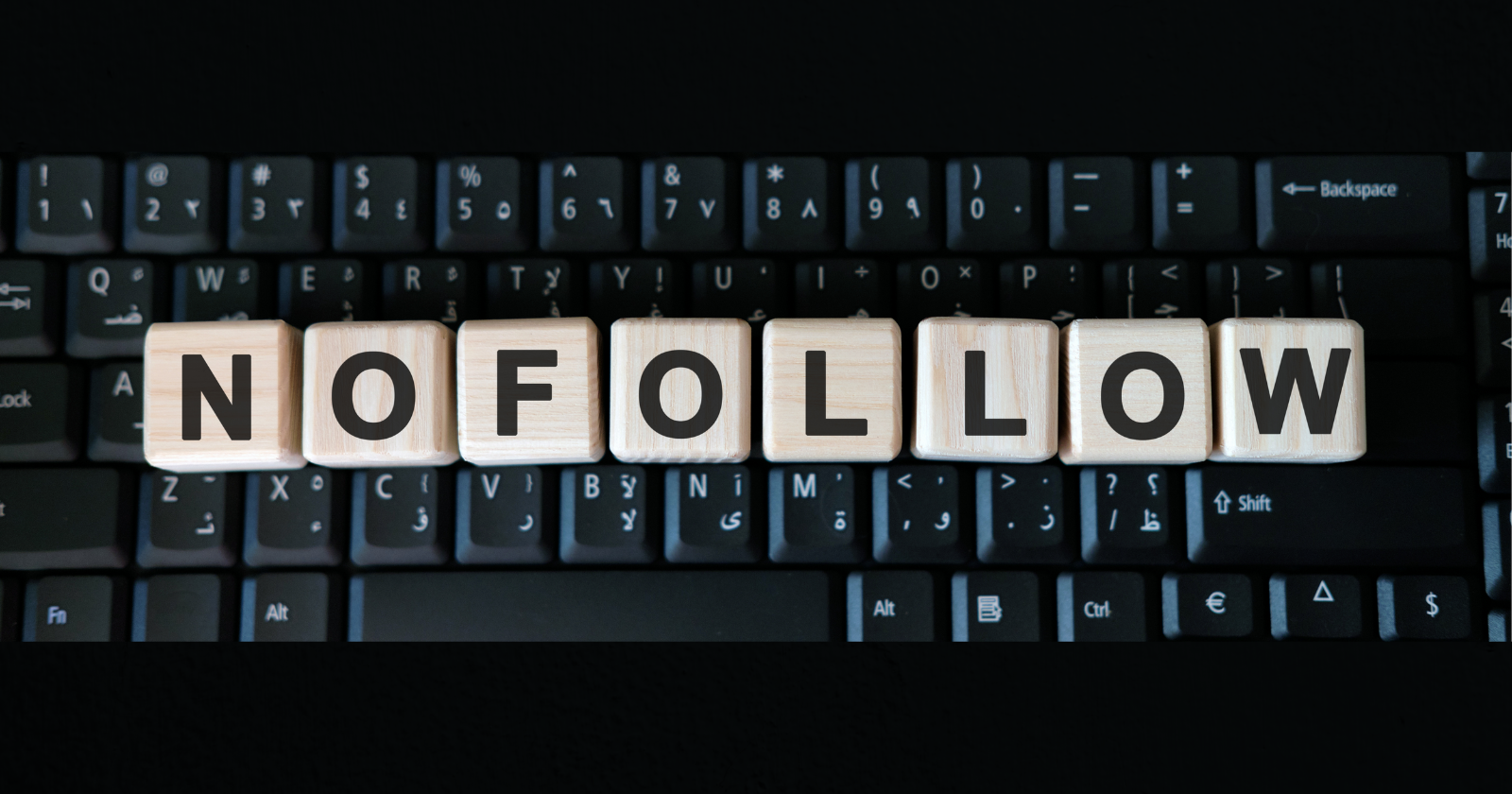Nofollow was introduced back in 2005 and came about as a reaction to blog spam comments.
Believe it or not, SEO professionals used to try and manipulate Google’s PageRank on their sites just as they try to manipulate… well, everything.
Nofollow basically tells Google (or any other search engine that supports this attribute) to not vouch for the target link.
Whereas it was previously used in the page-level meta tag (<meta name=”robots” content=”nofollow” />), it’s much more common to see it used on a per-link basis now.
What Does Nofollow Mean?
Nofollow is a rel attribute <rel=”nofollow”>.
A rel attribute specifies the relationship between the page where the link is and the page that the link points to.
Here’s an example of a basic nofollowed link:
I use <a href=”https://www.example.com/product” rel=”nofollow”>this</a> type of product.
Google’s Webmaster Guidelines currently state that:
“Links marked with these rel attributes will generally not be followed.”
However, those targets can be found through other means (like a followed link from somewhere else) so nofollowing a link is not a guarantee that Google won’t find that page.
Just four years later in 2009, Matt Cutts, formerly of Google, announced that trying to sculpt PageRank using nofollow would no longer work as it had in the past.
Previously PageRank was divided between the number of outbound followed links.
This change meant that it would be divided between the total number of links regardless of whether or not they were nofollowed.
To further explain, here’s a quote from Cutts’ blog:
“So what happens when you have a page with “ten PageRank points” and ten outgoing links, and five of those links are nofollowed? Let’s leave aside the decay factor to focus on the core part of the question. Originally, the five links without nofollow would have flowed two points of PageRank each (in essence, the nofollowed links didn’t count toward the denominator when dividing PageRank by the outdegree of the page). More than a year ago, Google changed how the PageRank flows so that the five links without nofollow would flow one point of PageRank each.”
Nofollow Becomes a Hint
Fast forward to March 2020 and Google announced that they now see the nofollow attribute as a hint rather than a directive.
Many SEO professionals had suspected this was the case but this was confirmation.
(Interestingly, Bing announced that they’d always treated nofollow as a hint.)
In addition to this announcement, Google added 2 more rel attributes for identifying the intent of links.
rel=”sponsored”
This attribute is used to identify paid content or paid links, for example:
I was paid to write about <a href=”https://www.example.com/product” rel=”sponsored nofollow”>this</a> type of product. (Sponsored post)
rel=“ugc”
This attribute is used to identify user-generated content like forum posts or blog comments, for example:
I have used <a href=“https://www.example.com/product” rel=“ugc nofollow”>this</a> type of product. (Comment or forum)
Both new attributes can be used with the nofollow attribute, which I have included in the above example.
If your links don’t fall into either new category but you still want to tell Google that you aren’t vouching for them, just use nofollow.
When Should I Use NoFollow?
Let’s examine what Google says about qualifying your outbound links: 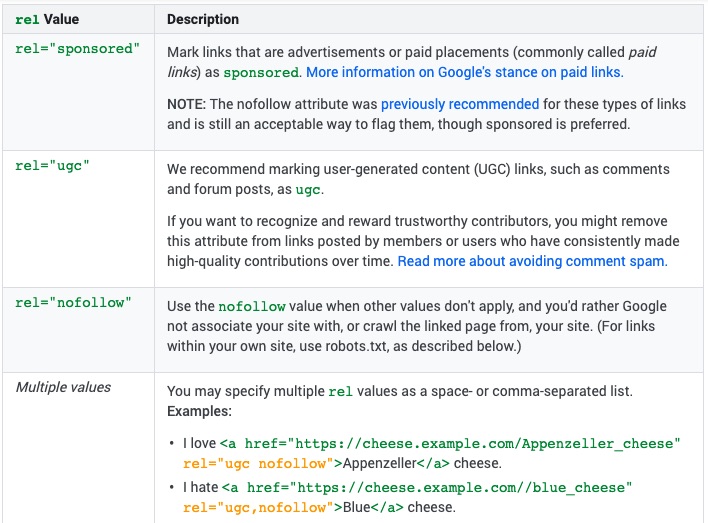
Whereas nofollow was previously used as a general catchall for links that you didn’t want to pass PageRank, now it’s supposed to be used when the other two rel attributes (sponsored and UGC) aren’t relevant and you don’t want the link to pass PageRank.
What Is Considered a Paid Link?
Just a quick bit here about paid links: many people have conflicting opinions on exactly what a paid link is.
However, Google describes paid links as including these types of links:
“…exchanging money for links, or posts that contain links; exchanging goods or services for links; or sending someone a “free” product in exchange for them writing about it and including a link.”
I do think that there is some confusion here because some oversimplify and think that if they didn’t pay a webmaster to post a link, even if they paid the webmaster to post their content that contains a link, it’s not a paid link.
In Google’s eyes, it’s still a paid link.
Link Schemes
Here is a synopsis of the current list of what constitutes a link scheme:
- Buying or selling followed links to manipulate PageRank: This includes links where you’ve offered the webmaster money to place the link, where you have sent a product so the webmaster writes about it, and where you have exchanged a service for a link.
- Mass-scale link exchanges.
- Mass-scale guest posts or articles that use keyword-rich anchors.
- Links that are auto-generated from various services.
- Links that are given because they are required by the owner of a product or service that you are using.
- Text ads that pass PageRank.
- Press releases with optimized anchor text.
- Bookmark sites.
- Low quality directories.
- Widgets.
- Footers and template links.
- Forum comments.
I dug into the Wayback Machine in order to look at what Google wrote about link schemes in previously years.
A lot is the same, but there’s a particularly interesting bit from 2013 that I think should still be in there today as it really tells you how not to build links:
“Links that are inserted into articles with little coherence, for example:
most people sleep at night. you can buy cheap blankets at shops. a blanket keeps you warm at night. you can also buy a wholesale heater. It produces more warmth and you can just turn it off in summer when you are going on france vacation.“
Sadly, that is still a common thing to do.
When You Shouldn’t Use a Nofollow
If you are giving someone a link because you want to, you think it’s a good resource, and you haven’t been given anything or paid for it, you don’t need to nofollow it.
If you don’t see that it in any way can be considered a link that is designed to manipulate PageRank, you don’t need to nofollow it.
Some webmasters have become so afraid of being penalized that they nofollow all outbound links.
In my opinion, this is unnecessary unless your site only exists to sell links.
What About Dofollow?
It doesn’t exist.
If a link isn’t nofollowed, it’s automatically followed.
(Unless… it’s nofollowed through a meta robots tag on a page level. Read Google’s help doc on the topic for more information)
What Value Does a Nofollowed Link Bring?
A nofollowed link may not help you rank higher – but with the decision to treat it as a hint instead of a directive, it still could.
Nofollowed links are also part of a natural link profile and a site with no nofollowed links looks odd.
The best thing about nofollowed links is that they are good for traffic and can send you much more traffic than many followed links.
If the New York Times ran a story and gave you a nofollowed link, wouldn’t you still be happy with it?
I know I would.
How Can I See How Many Nofollowed Links I Have?
All major tools will tell you how many nofollowed and followed links you have.
Here are a few examples of what that looks like.
Ahrefs
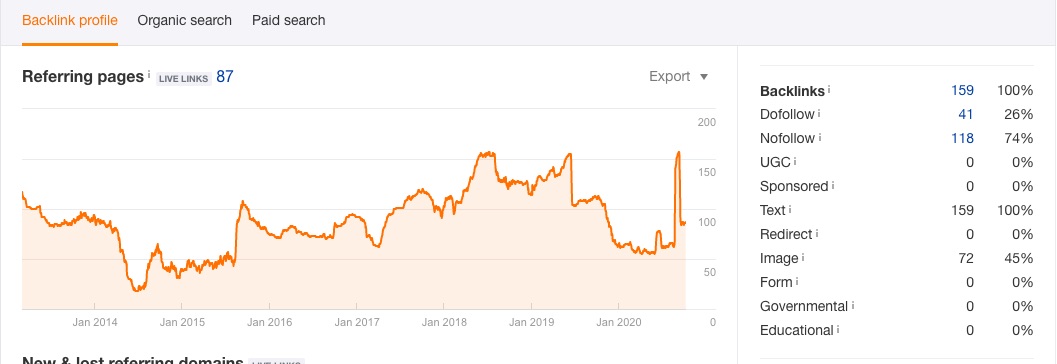
Majestic
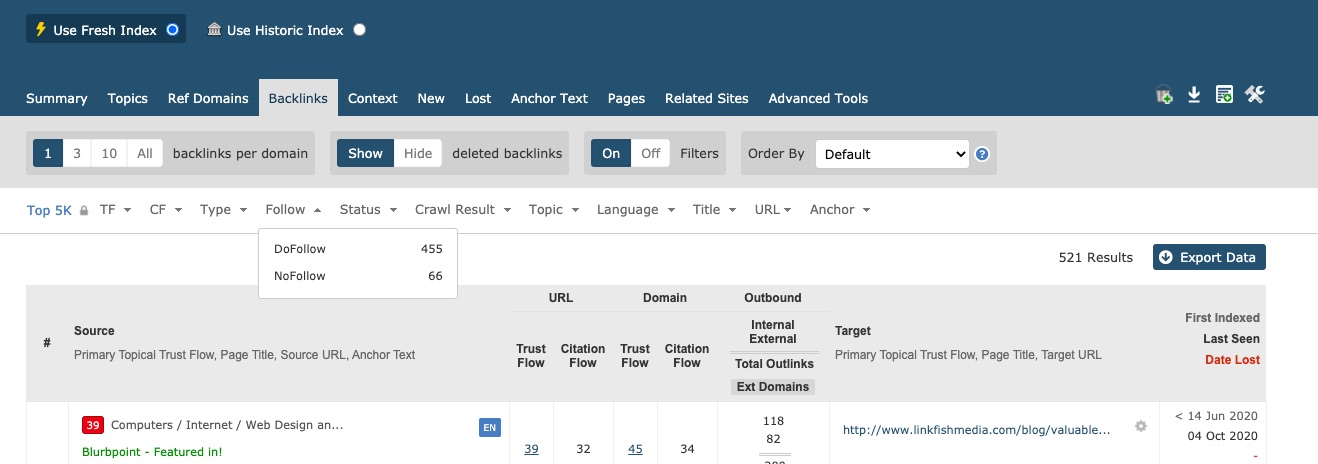
SEMrush

How Do I Tell If a Link Is Nofollowed
I don’t like to use a lot of plugins so I tend to head straight for the code.
I look to see if nofollow is in the code for my link.
Below is an example from this post.
<a href="https://www.screamingfrog.co.uk/seo-spider/" target="_blank" rel="noopener noreferrer nofollow">Screaming Frog</a></li><li><a href="https://www.semrush.com/" target="_blank" rel="noopener noreferrer nofollow">SEMrush</a></li><li><a href="https://ahrefs.com/" target="_blank" rel="noopener noreferrer nofollow">Ahrefs</a></li><li><a href="https://majestic.com/" target="_blank" rel="noopener noreferrer nofollow">Majestic</a></li>
However, there are some plugins that can highlight nofollows:
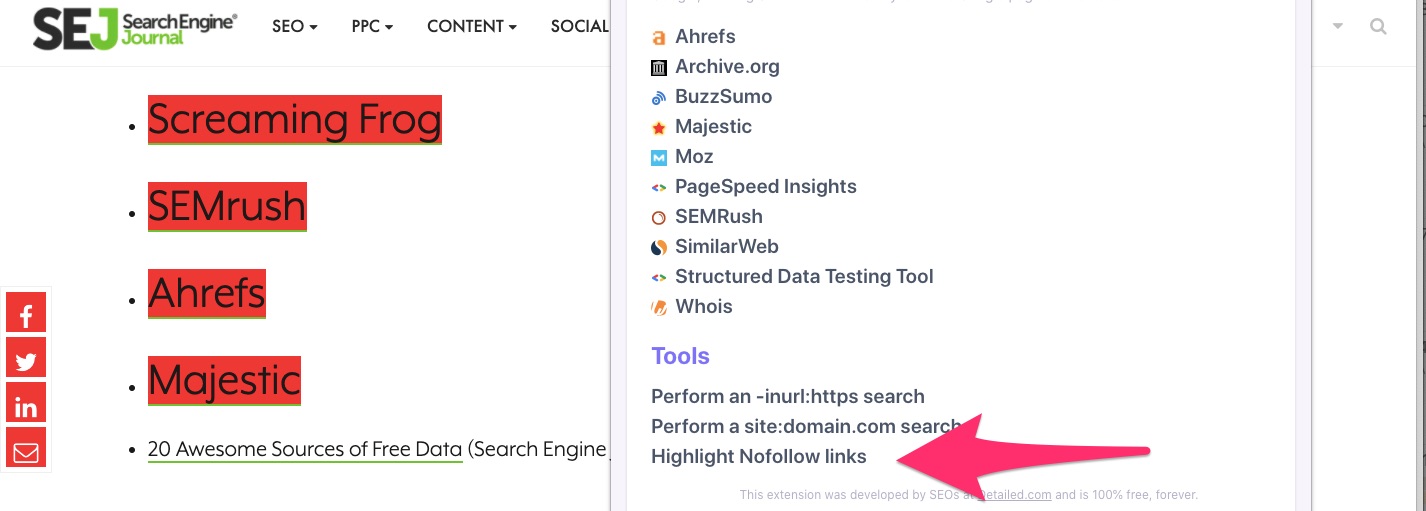

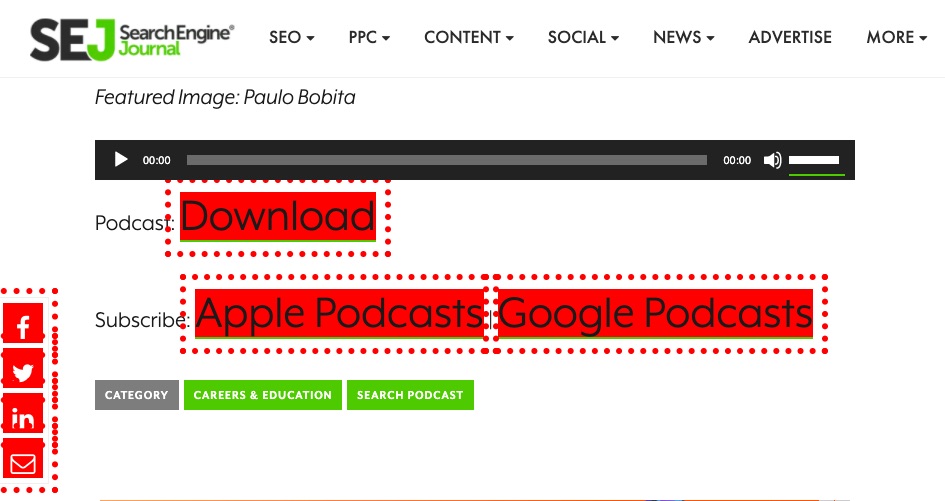
To Nofollow or Not to Nofollow?
Follow:
- If you are linking out to a source and you trust the source.
- Guest post – unless they’re posting on a large scale. This is for a true guest post where you are not paying for the post.
- Link to social media profiles.
Nofollow:
- If you sold a link.
- If someone paid you to post their content.
- If you are in any way nervous that you might be penalized for the link.
- Sitewide link to person who designed your site – although many people will follow links to company names.
- Widgets.
Nofollow in the Real World
Let’s face it. We don’t always stick to the rules as SEO pros.
We manipulate anything that works well and it gradually becomes useless or dangerous.
So are people using nofollow, UGC, and sponsored values as Google intends?
Time will tell.
More Resources:
- How to Find Unnatural Links to Your Site & What to Do About Them
- 10 Bad Links That Can Get You Penalized by Google
- Link Building for SEO: A Complete Guide
Image Credits
All screenshots taken by author, October 2020



